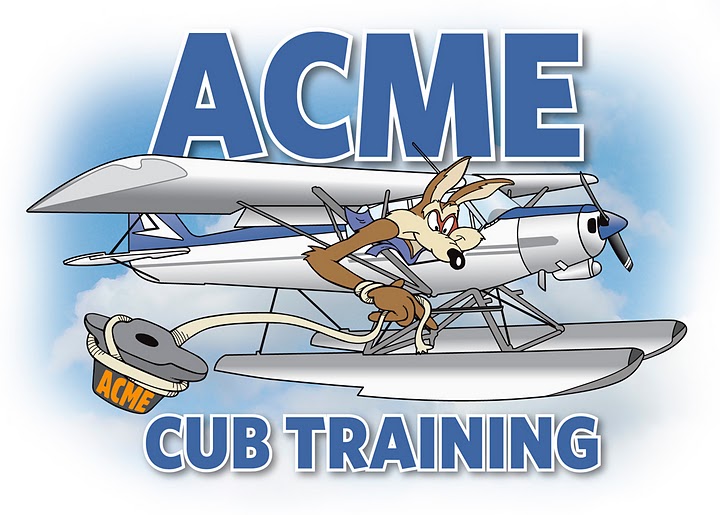Electronic Advanced Passenger Information System (EAPIS) https://eapis.cbp.dhs.gov/
Our great leaders have come up with a new way to keep America safe from unwanted intruders. We all can sleep easier now that the EAPIS system is in place. All pilots must log into https://eapis.cbp.dhs.gov/ and register about a week before crossing into or exiting from United States. After your initial registration, the system will deliver a Sender ID and an Activation Key to your email inbox. Activating your new account is easy if you remember to use the Sender ID that the system assigned to you and the password that you chose. However, activating the account will be frustrating if you attempt to use the User ID that you chose during the initial login rather than using the Sender ID.
I learned how to use the system last week when I flew from Penticton, British Columbia to Anchorage, Alaska in a wheeled DHC-2. We planned to fly up the coast with stops at Bella Bella, Prince Rupert, Ketchikan, and Yakatat. A low-pressure system on the coast dashed this plan. The Prince Rupert terminal forecast predicted 300 sky obscured, ¼ mile visibility in fog. The Outlook reported more of the same. The METAR and TAF for all the points along the Trench made that route look appealing. The weather from Whitehorse to Gulkana was IFR, but we did not worry about that at the moment. Whitehorse was nine flight hours away. After a day of flying and a night in Whitehorse, we hoped the weather would change. Soon after eating an early breakfast, we filed a VFR flight plan with FSS and departed for Prince George with 138 gallons of gas. On this first leg we converted 242 liters (64 US gallons) of 100 LL into a lot of noise with a 145 mph ground speed. The second leg to Watson Lake burned another 345 liters (91 US gallons). The hot sunny day produced ample cumulus clouds, but produced no lightning. The OAT allowed the flight in T-shirts and shorts with the windows lowered. As the afternoon sun grew hotter, only a few of the cumulus clouds turned dark and heavy. We encountered light rain showers, but no lightning. As we arrived at the Watson Lake airport it appeared deserted. No chatter was on the radio. The only noticeable life was the briefer in the FSS. After receiving a favorable briefing, we departed for Whitehorse. We found Whitehorse full of overfed or nearly dead travelers who had deboarded the cruise ships which were anchored at Skagway – an hour's drive away. After three phone calls, we found a hotel with a vacancy. While eating ribs on the deck at the Klondike Rib & Salmon Barbecue, we exchanged ALCAN stories with two Honda Goldwing travelers. We had enough fun and conversation that the waitresses took our picture. After dinner, I logged into https://eapis.cbp.dhs.gov/ once again to enter border crossing details. Logging in took several attempts. I tried to use the User ID. This did not work. The system needed the Sender ID that was sent to my inbox and the password that I generated. After reading the login page, I figured out the problem and successfully opened the EAPIS home page. I followed the prompts and entered the passenger information and the border crossing information. This entire process was completed within an hour.
The following morning we woke up to another early wake up call. A taxi delivered us to the FSS where we found many pilots sipping coffee. The weather briefer in Whitehorse had lots of company. For the past several days all VFR aircraft headed for Alaska had been stopped by the low-pressure system. We checked the weather, topped off the tanks, and led the way. At first, I was tempted to fly direct, but the hills looked ominous. I decided to follow the highway only to find the rain intensifying and the clouds lowering. By the time I reached Burwash Landing, I slowed down to 90 mph and pumped down a little flap. Squalls obscured my course several times causing me to leave the highway and circle until the squalls moved through. The comforting thing about this route is the Alaska Highway is mostly straight with little traffic and few power lines. It is easy to land on most straight stretches of the road, and many pull-offs exist to get aircraft off the highway. For situational awareness, I followed our ground track on the Whitehorse Sectional with my finger. I put an X on the sectional to indicate the landable stretches of the highway and an X on all the airports as we passed them. I knew exactly where I was at all times and knew my landing options should the weather worsen. As I passed Beaver Creek, we cleaned up the flaps and ran the power up to 28 inches of manifold pressure. The sun was shining again. Clearing customs went smoothly and only took five minutes. I must have filled out EAPIS correctly. After customs we were informed that no fuel was available. Our options: Tok or Gulkana. Gulkana reported clear and ten miles visibility. I filed for Gulkana, climbed through a scattered layer, and headed direct. After Gulkana, all points showed severe clear with a tailwind down the Matanuska River. We arrived in Anchorage by 3:30 p.m.
Note:
- Remember to register with EAPIS about a week before your trip. Keep the password you chose on your initial registration in your permanent records.
- EAPIS will send a Sender ID and an Activation Number.
- Use the Sender ID and your password to log into EAPIS and activate your account.
- Keep the Sender ID in your permanent records.
If you have any questions feel free to call me at (907) 250-6030.
Steven Williams
ACME Cub Training


No comments:
Post a Comment